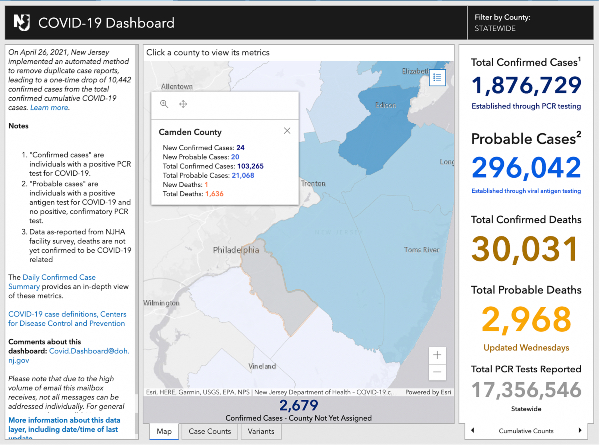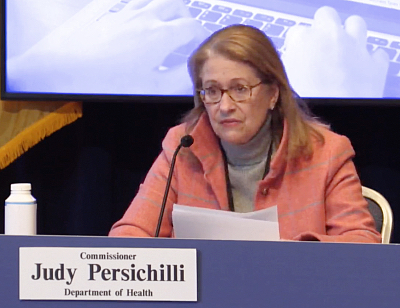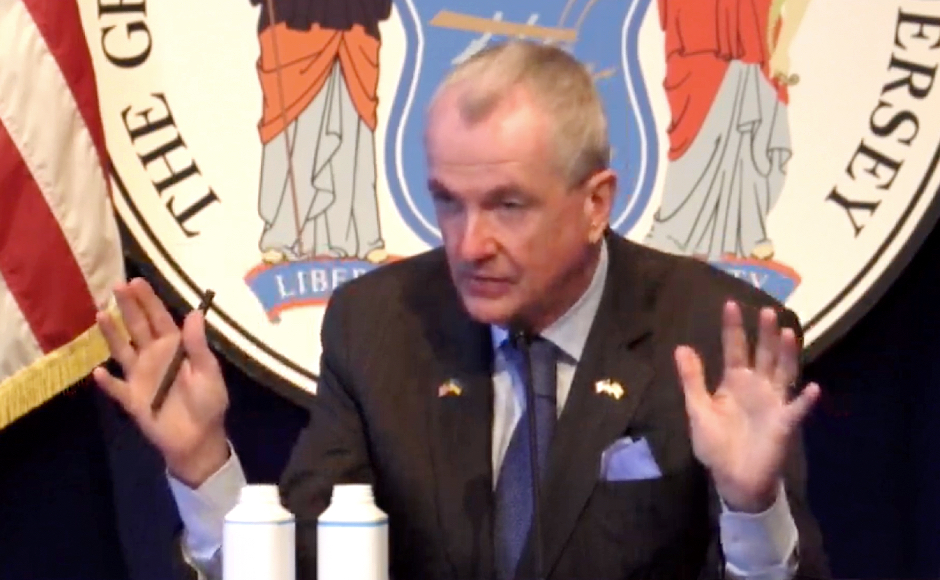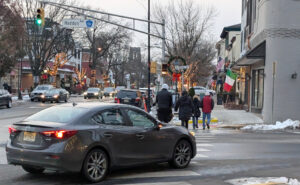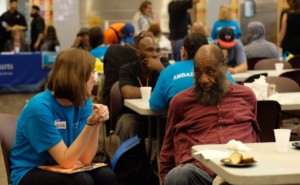Governor Phil Murphy spoke positively about the work New Jerseyans did to mitigate the impact of the virus, emphasizing the need to monitor future COVID-19 levels and adapt accordingly.
By Matt Skoufalos | March 4, 2022
Another 1,153 New Jersey residents have tested positive for novel coronavirus (COVID-19), bringing the statewide total to 1.876 million cases confirmed via polymerase chain reaction (PCR) testing, Governor Phil Murphy reported Friday, in the final regular COVID-19 briefing of the pandemic.
“We have asked so much of each and every New Jerseyan for the past two years,” Murphy said.
“You have overwhelmingly delivered, and then some.
“We’re at this point only because of your dedicated work to protect yourself, your families, and your communities,” the governor said.
Starting Monday, the public health emergency and school and daycare mask mandates will be lifted, a signifier that Murphy said “marks the end of this phase in our war against coronavirus, as we make this transition from pandemic to endemic.
“Now the challenge before us is to define the new normal, as we expect COVID-19 to remain with us,” he said.
“We must remain focused on our most vulnerable residents,” the governor said. “It is likely that we will continue to have surges in COVID-19 activity, so it will be important that we all continue to be aware of activity levels and adjust our behavior accordingly.”
Murphy also reported 324 new COVID-probable cases based on antigen tests, bringing the statewide total to 296,042 positive antigen tests.
Antigen tests have a faster turnaround time than PCR tests—sometime within 15 to 30 minutes—but are less reliable at detecting active infection of the virus, and more capable of reporting false positives.
Sadly, 17 more residents have perished from complications related to the virus, bringing the statewide, confirmed death toll to 30,031 lives lost during the pandemic.

Gov. Phil Murphy memorializes more than 600 of the 30,000 NJ residents lost in the COVID-19 pandemic. Credit: NJ Pen.
In addition to those lab-confirmed fatalities, the state has acknowledged another 2,968 probable COVID-19-related deaths—eight more than previously reported.
During his remarks Friday, Murphy’s voice faltered and his eyes welled as he called for a moment of silence for the tens of thousands of pandemic victims in New Jersey.
“We honor every single one of the—hard to believe—more than 30,000 lives we’ve lost,” the governor said, swallowing hard.
“So, for all of them, let’s do one final moment of silence.”
Since March 2020, 1,290 of every 100,000 New Jersey residents (more than one out of every 100) have been hospitalized with COVID-19, and 343 of every 100,000 have died from COVID-19-related complications.
More than 17.356 million polymerase chain reaction (PCR) tests for COVID-19 have been performed statewide, with a 21.35-percent positivity rate per 100,000 residents.
Rate of transmission (Rt) at 0.77, spot positivity higher in South Jersey
The statewide average of COVID-19 spot positivity testing based on PCR test results stood at 1.94 percent March 4; in South Jersey, it was higher, at 2 percent.
Rt, the variable that describes the seven-day, rolling-average, statewide rate of transmission of new COVID-19 cases, held at 0.77 March 4.
An Rt figure of less than 1.0 means that each new COVID-19 patient is infecting less than one other person, on average, and the spread of the virus is decreasing.
Since its mid-April-2020 pandemic-high spike, the highest reported Rt in New Jersey was 1.77, recorded January 3, 2022. Prior to artificially low, adjusted reports of 0.34 in the first week of May 2021, the lowest rate of transmission in the past two years was 0.62, recorded June 9, 2020. On May 21, 2021, it reached a new low, of 0.59, a depth unmatched until it hit 0.57 on February 17, 2022.
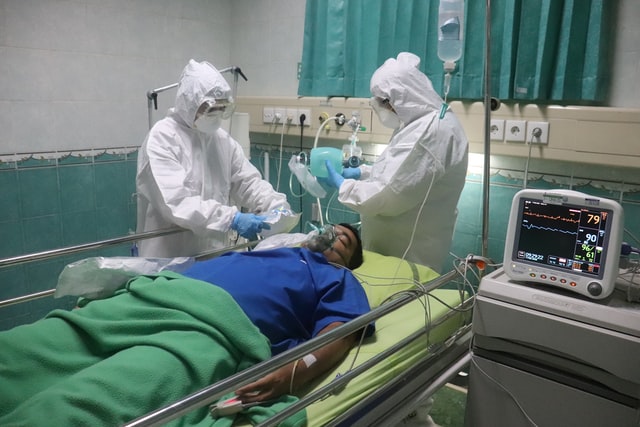
Simulated COVID-19 patient in a hospital bed. Photo by Mufid Majnun on Unsplash
COVID hospitalizations continue to fall
Throughout New Jersey, 708 people currently are hospitalized with a suspected (35) or confirmed (673) case of COVID-19, Murphy said.
Among those hospitalized patients, 124 are in intensive or critical care, and 82 of the ICU and critical-care patients (66 percent) are on ventilators.
In New Jersey’s 71 critical care hospitals, 65 patients were hospitalized with COVID-19 yesterday, while 124 others were discharged.
LTC update: outbreaks persist
Across the state, long-term care (LTC) centers have reported 2,373 cumulative outbreaks of COVID-19, and 355 are dealing with an active outbreak. LTCs account for 84,628 infected patients and staff in New Jersey, or 4.5 percent of total cases.
That includes 46,762 residents and 37,866 staffers sickened by the virus, as well as 9,301 lab-confirmed resident and staff deaths (30 percent of the statewide confirmed total), with facilities self-reporting 149 staff deaths.
Of 607 veterans residing in three state-run homes, nine residents currently are positive for COVID-19, and 169 have died from complications related to the virus—two more than previously reported.
The facilities at Menlo Park, Paramus, and Vineland are staffed by 1,370 workers, one of whom is presently COVID-19-positive. The facilities have sustained three staff deaths related to the virus.
At state-run psychiatric hospitals, 30 of 1,128 patients and 60 of 1,136 staff members have tested positive for COVID-19. At least 14 patients and eight staffers have died from complications related to the virus.
More MISC cases, school outbreaks slowing
To date, 190 New Jersey children aged 1 to 18 have been diagnosed with pediatric multisystem inflammatory syndrome (MISC)—four more than previously reported.
One child has died from complications related to the syndrome in New Jersey.
Five MISC cases have been reported in Camden County, sixth-fewest among all counties in the state.
All those pediatric patients have tested positive for an active COVID-19 infection or the presence of COVID-19 antibodies, indicating exposure to the virus.
Symptoms of MISC include an ongoing fever, bloodshot eyes, stomach pain, skin rash, vomiting, and confusion, New Jersey Health Commissioner Judy Persichilli said, advising parents to contact their child’s doctor or clinic right away if their child displays any such signs.
Overall, the state has lost 12 children of COVID-related causes throughout the pandemic; eight of them have been younger than four, and four others were aged five to 17.
From August 1, 2020 through the end of the 2020-2021 school year, 293 COVID-19 outbreaks encompassing 1,385 individual cases were traced to in-school activities in all 21 New Jersey counties. In Camden County, 18 outbreaks were linked to 78 in-school cases, sixth-most in the state.
Since the start of the 2021-2022 school year, 511 reported outbreaks—three or more students or staff who contracted the virus within the school—have been logged, affecting 3,469 people, a mix of students and staff.
In Camden County, 53 COVID-19 outbreaks have accounted for the in-school infections of 413 people, which is the largest case count and second-largest outbreak count of any county in the state, and more than the county sustained in the entire prior school year.
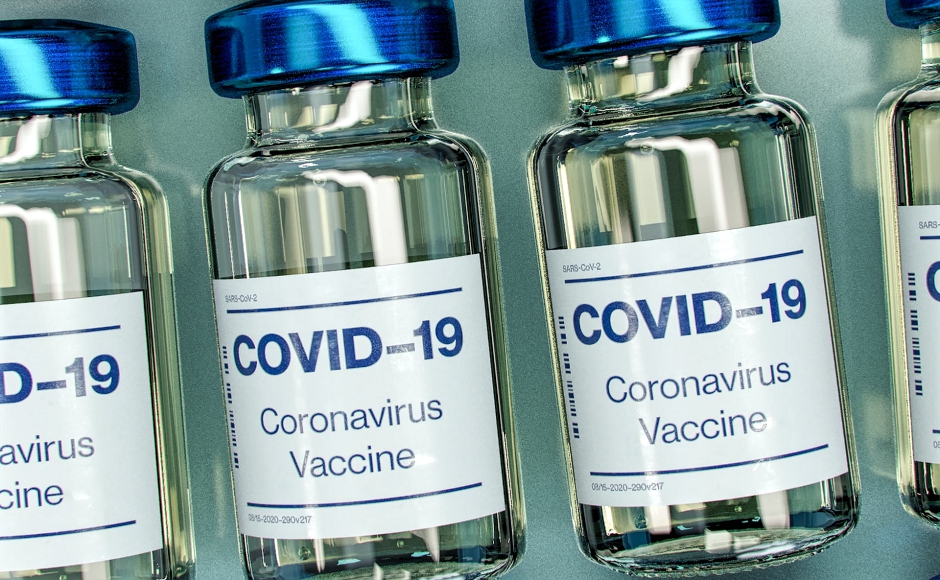
COVID-19 vaccine bottle mock-up. Photo by Daniel Schludi on Unsplash
Vaccination update: NJ approaches 6.8M fully vaccinated people
More than 13.750 million primary-series COVID-19 doses have been administered in New Jersey, with 6.546 million people having been fully vaccinated in-state, having received either a one-shot formulation from Johnson and Johnson or both doses of the two-shot Pfizer or Moderna vaccines.
An estimated 564,099 vaccine doses have been administered to New Jersey residents outside of the state, of which 225,200 residents are estimated to have been fully vaccinated.
In Camden County, 729,656 doses have been administered, seventh-most in the state; 352,534 people there have been fully vaccinated.
More than 76 percent of the state population that is eligible for vaccination has completed its full vaccination series, and 50 percent of those eligible for boosters have gotten them.
Ninety-two percent of the vaccine-eligible population of the state aged five and older has received at least one dose, Persichilli said; 78 percent have completed their primary vaccine series and 54 percent of those eligible have received a booster dose.
Vaccination sites in New Jersey have also administered 1.721 million Pfizer third/booster doses, 1.339 million additional Moderna doses, and 65,785 additional Johnson and Johnson doses.
The first vaccines in the state were administered December 15, 2020; by February 8—55 days later—New Jersey had immunized its millionth resident. Twenty days thereafter, that count hit 2 million, and 3 million within two more weeks.
On March 29, New Jersey crossed the 4-million-dose threshold, and the state cleared 5 million doses over the weekend of April 10, 2021. Eight days after that, New Jersey hit the 6-million-dose mark. By May 3, 2021, the state had cleared 7 million doses administered, and two weeks later, it had surpassed 8 million doses.
As of June 2, 2021, the state had cleared 9 million administered doses and 4 million fully vaccinated New Jerseyans, and on June 18, hit 4.7 million vaccinated individuals, its target goal for 70 percent of the adult population of the state.
By mid-July, that number had increased to 5.019 million people fully vaccinated at New Jersey vaccination sites. At the end of August 2021, the state had exceeded 11 million doses administered and had begun approaching 6 million fully vaccinated residents.
It took until mid-October 2021 to clear the 12-millionth vaccine dose administered, at a time when some residents began receiving booster doses or third doses. By late October, New Jersey finally reached an estimated 6 million fully immunized residents, nearly three months after having crossed the 5-million-resident threshold.
‘Endemic’ versus ‘pandemic’ COVID-19
New Jersey State Epidemiologist Dr. Christina Tan offered a few remarks on the practical impact of the shift in pandemic to endemic virus mitigation strategies; namely, that defining what endemic COVID means is “still a work in progress.”
Although the country now has testing, vaccination, and viral therapeutics capacities that it didn’t at the outset of the pandemic, Tan said that “learning to live with the virus” implies an ongoing need for people to adopt an introspective mindset about their individual risk factors while still keeping a weather eye on evolving information about future outbreaks.
“That really is the nature of living with the virus: being willing to be flexible, to adapt to all the changes in the information we’re learning about the virus so that we can understand what our personal risks are and then taking those measures,” Tan said, which include promoting “healthy behaviors that promote a healthy community.”
Dr. Ed Lifshitz, who heads up the New Jersey communicable disease service, said that although the state has just 5 percent of the cases it did as recently as January, there are still 1,000 reported positive tests per day, “which is a lot of cases for New Jersey.”
Lifshitz added that the state saw more deaths from the COVID-19 variant B.1.1.529 “Omicron” in two weeks than it would sustain in a bad flu season.
“We don’t think it’s going to completely go away, and that’s what endemic means,” Lifshistz said. “Endemic doesn’t mean gone; it does, to me, mean that we’re in a much more controllable spot.
“We do need to continue to be vigilant when it comes to this virus as well as other things down the road,” he said.
Murphy added that endemic to him means “everybody having a willingness to accept that we don’t know all that we don’t know on this thing.”



